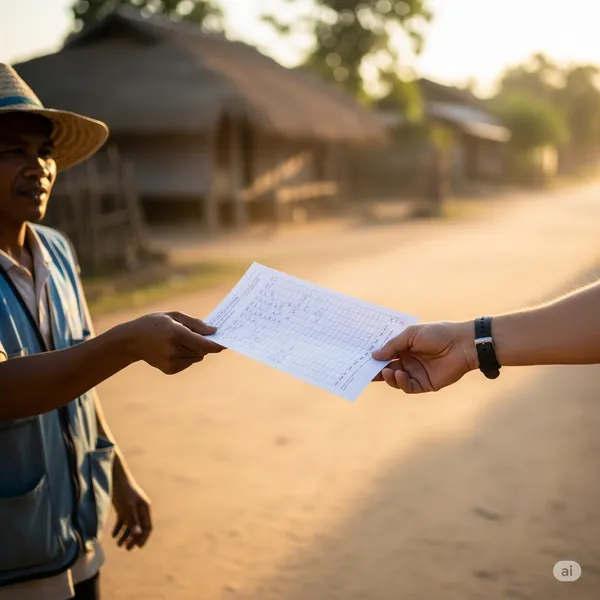Systemic Risk Mitigation: Preventing Gender-Based Violence in Aid Operations
Published on: Sat Feb 18 2023 by Ivar Strand
Introduction: The Mandate to Protect
Projects operating in fragile and post-conflict environments carry an inherent responsibility to protect vulnerable populations. This principle of “Do No Harm” is a cornerstone of ethical engagement. However, even well-intentioned development and humanitarian interventions can inadvertently create or exacerbate the risk of Gender-Based Violence (GBV), including Sexual Exploitation, Abuse, and Harassment (SEAH).
The challenge is twofold. First, mitigating this risk is an absolute ethical imperative. Second, it demands a specialized methodology to be effective. The core problem is how to verify that robust, survivor-centered systems for prevention, reporting, and response are not just designed, but are fully functional in practice—without causing further harm to at-risk individuals. This paper outlines a framework for such a verification process.
The Challenge: Exogenous Shocks and Endogenous Risk
A fundamental idea is that development projects act as exogenous shocks to a community’s social and economic system. An influx of resources, such as in a cash transfer program, or a shift in labour patterns from an infrastructure project, inevitably alters local power dynamics. These shifts can create new vulnerabilities or amplify existing ones, leading to increased risk of GBV.
The challenge is not simply about preventing misconduct by project staff; it is about understanding how the project’s very presence interacts with the local context. A project that fails to be cognisant of these dynamics may inadvertently disempower women, create dependencies, or disrupt community protection mechanisms. Thus, GBV risk mitigation cannot be a peripheral compliance activity. It must be a central component of project design and management.
A Framework for Systemic Risk Mitigation
At Abyrint, we have worked on establishing and verifying systems that move beyond simple compliance. A functional approach requires a structured process. We suggest a four-step model for building and verifying a truly survivor-centered system.
-
Step 1. Foundational Context Analysis. Before project activities begin, a thorough analysis of the GBV landscape is required. This involves mapping existing gender and power dynamics, identifying local formal and informal justice systems, and assessing the capacity and accessibility of existing service providers (health, psychosocial, legal). This baseline is essential for designing contextually appropriate mechanisms.
-
Step 2. Design of Survivor-Centered Mechanisms. A survivor-centered approach dictates that the system must be built around the needs and rights of the survivor. This has practical design implications. It requires multiple, confidential reporting channels, ensuring that a survivor is not dependent on a single person or pathway. It also means that response protocols must be clearly defined, codifying everything from immediate medical and security assistance to long-term psychosocial support, all while guaranteeing the survivor’s agency in decision-making.
-
Step 3. Continuous and Ethical Verification. A system on paper is not a system in practice. Verification is the process of determining if these mechanisms are functional, accessible, and trusted by the community. This is the most delicate phase and requires specialized expertise. The goal is to assess the system’s health without forcing individuals to disclose traumatic experiences. This process is illustrated in the model below.
This process is outlined in Exhibit A: The Verification Cycle.
-
Step 4. Iterative Adaptation. The operating environment is not static, and neither are the risks. The verification process must feed into a cycle of continuous adaptation. Feedback from community members and local partners should be used to refine and improve reporting channels, response protocols, and prevention strategies throughout the project lifecycle.
Ethical Fieldwork: The Practice of Verification
Directly asking community members “Have you experienced violence?” or “Does this reporting system work?” is often counter-productive and can be harmful. It places the burden of proof on the survivor and can create security risks.
A more methodologically sound approach relies on triangulation and the use of proxy indicators to assess the system’s functionality. This is about asking the right questions to the right people. At Abyrint, we have found the following methods to be effective:
-
Assess Service Provider Linkages. The verification team can engage with local health clinics, women’s shelters, and psychosocial support groups that were identified in the foundational analysis. The key question is whether they have received appropriate and confidential referrals from the project’s formal system. This confirms the system is connected to the real-world support network.
-
Measure System Awareness. Through focus group discussions, we can assess community awareness. The inquiry is framed indirectly: “If a person in the community had a serious and confidential problem, do they know where they could safely go for help?” This measures knowledge of the pathways, a precondition for their use.
-
Review Anonymized Case Management Data. An audit of the project’s case management records (fully anonymized to protect confidentiality) can reveal if the documented process follows the stated survivor-centered principles. It helps answer: Was confidentiality maintained? Was the survivor offered a choice of services? Was the case handled within the established timeline? This verifies process integrity.
Conclusion: Moving Beyond Compliance
Mitigating GBV risk is not a checkbox exercise satisfied by a written policy and a hotline number. It is a profound fiduciary and ethical responsibility that requires building, maintaining, and verifying a living system. This system must be grounded in a deep understanding of the local context and centered on the safety, dignity, and agency of the survivor.
Ultimately, the goal is to ensure that protection mechanisms are not just present, but are effective for those they are designed to serve. This requires a shift in mindset—from reactive compliance to proactive, systemic risk management.



